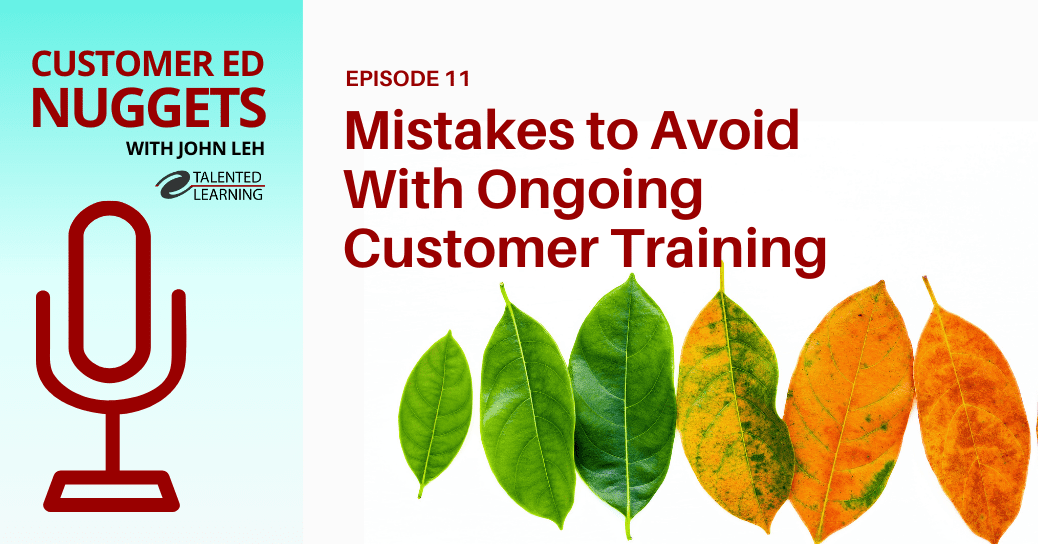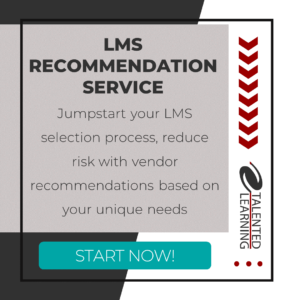
You like potato and I like potahto
You like tomato and I like tomahto
Potato, potahto, tomato, tomahto
Let’s call the whole thing off!
I get it. We’re living in an increasingly customer-centered world. But what I don’t always get is how to distinguish one customer-centered business term from another. And where exactly does customer education fit in?
These days, with a vast spectrum of customer-focused solutions jockeying for position in the marketplace of ideas, we should expect vocabulary lines to blur. But sometimes the buzzword noise is deafening and downright confusing. While existing keywords swirl around us in a murky haze, new variations on a “customer” theme suddenly squeeze their way into the mix, demanding their share of attention.
Who can wait for the dust to settle before we clarify interrelated terms? We can’t. And we bet you can’t either. That’s why we compiled a brief glossary. If you’re involved in customer education (or only just interested in understanding today’s customer experience landscape) this quick reference guide is intended for you.
The following collection of keywords isn’t comprehensive. However, we hope the blurred lines between these terms illustrate why it’s important to consider the many elements that define customer-centered business. When appropriate, we’ve linked to additional sources of information, so you can drill down for more insight:
Customer Education Glossary: Terms Every Training Professional Should Understand
Customer Adoption – Broadly speaking, adoption is what happens in the customer lifecycle between onboarding and renewal. It primarily refers to frequency and depth of product or service use. Adoption guidance is typically delivered through support services, professional services and/or education services teams. Although each specialty applies different engagement approaches and delivery models, all are focused on ensuring that customers use products or services effectively.
If a customer adopts your product, the next step is renewal or expansion. If not, the relationship ends in churn. After a renewal (or up-sell or cross-sell), the adoption process begins again. To better understand the concept of adoption, check this video featuring Thomas Lah, Executive Director of the Technology Services Industry Association (TSIA).
Customer Education – Customer education (aka customer learning or customer training) is more than just teaching people about how to use features of a product or service they’ve purchased. It’s also about helping them understand related best practices, demonstrating the product’s value-add, and communicating about why and how it helps them achieve their specific objectives.
The best learning programs continuously empower customers before, during and after a purchase. Proactive customer education is an integral part of customer success – the more customers engage with a product, the more likely they are to continue using and valuing it. Although customer education is a specialized function with specialized tools, it is integral to all other customer-related functions.
Customer Engagement – Customer engagement is the communication that builds connections between a customer and a company, and with other customers who are part of the brand community. Sometimes viewed as one element of customer experience, customer engagement focuses on demonstrating value, encouraging adoption, mitigating attrition, facilitating expansion and encouraging advocacy. This virtuous business cycle is developed through accumulated outreach, responses and interactions, both online and offline. The more engaged customers are with your brand, the more likely they are to remain loyal and this increases their lifetime value.
Customer Experience (CX) – As Mercedes-Benz USA President and CEO Steve Cannon says, “Customer experience is the new marketing.” In essence, CX is a customer’s perception of a business, product or service, based on cumulative interactions, over time. This perception depends on three dimensions:
- Function (Do you deliver what the customer wants?)
- Access (How easily can the customer do business with you?)
- Emotion (How does the customer feel about your relationship?)
Customer Growth – This refers to software that targets customer success. It is tied to customer lifecycle (aka customer evolution), but also helps customers stay longer, spend more and tell others about the products/services they use. A customer growth platform combines intelligence, targeted engagements and customer health monitoring to help customer success teams deliver precisely what each customer needs to succeed in key moments through each stage of the customer journey.
Customer Journey Mapping – This is a framework for plotting the stages of the customer lifecycle (adoption – retention – expansion – advocacy), and identifying points where an organization should proactively intervene to drive customer engagement and pave the way for retention and/or renewal opportunities. Research by TSIA shows that customer journey maps are one of four key practices of organizations with the highest retention and renewal rates.
Customer Lifecycle – This term refers to the progression of steps a customer moves through when considering, purchasing, using and maintaining loyalty to a product or service. (These stages are also commonly known as adoption, retention, expansion and advocacy.) The customer lifecycle is often illustrated as a loop to indicate that the goal of customer-centered organizations is to repeat the cycle again and again through continuous engagement.
Customer Lifetime Value (CLTV/LTV) – Customer lifetime value is a calculation that estimates the total net profit associated with a customer throughout the entire relationship with a company. Customer lifetime value is an important concept because it encourages organizations to shift their focus from quarterly profits to the overall long-term health of customer relationships. This metric is also important because it represents the upper limit on spending to acquire a new customer.
Customer Onboarding – This is the process of welcoming new customers and helping them learn the basics to ensure early success with a product or service. This may begin even before a purchase (for example, during a “free trial” phase). It usually focuses on providing instruction, context and support needed to get started effectively. Because customer onboarding establishes a foundation for ongoing customer relationships, this process is critical.
Customer Relationship Management (CRM) – The “granddaddy” of customer-focused business platforms, CRM refers to practices, strategies and technologies designed to help organizations manage and analyze interactions with customers, prospects, suppliers and other external constituents. The goal of a CRM system is to facilitate customer acquisition, retention and expansion – and ultimately drive business growth and profitability.
Customer Retention – Customer retention involves the various activities that help companies keep their existing good customers and reduce the rate of defections. There are multiple reasons to make customer retention a priority. For example, researchers at Harvard Business School found that increasing customer retention by 5% can lead to profits that are 25%-95% higher. Another study found that the probability of selling to a new prospect is only 5-20%, while the probability of selling to an existing customer is 60-70%.
Customer Service – Customer service refers to the help and assistance companies offer buyers of their products or services through resources, tools and processes. It is an important aspect of the customer experience because customer perceptions can be heavily influenced by customer service interactions.
Customer Success – Also known as customer enablement, the mission of this relatively new business function (and corresponding technology) is to focus on helping new and existing customers achieve their objectives when using a product or service. This can be achieved by developing a coherent customer journey map and using it to monitor and assess the customer experience across all interactions with your company.
Customer success teams also proactively engage with customers to drive adoption, renewal and expansion in alignment with customer expectations. This involves a variety of responsibilities, including customer engagement, onboarding, adoption and ongoing customer support and education.
Closing Notes
Is your head exploding yet? Let’s summarize. Product-focused strategies are out. Customer-focused strategies are in. This massive shift has opened the doors to a flood of customer-oriented systems, tools, roles and processes. But before we can make intelligent technology choices, we first must understand how the pieces fit together. And understanding starts with coherent communication.
These definitions are a step in that direction. But the conversation continues. So think of this as a living glossary that will shift as the market evolves. Periodically, we’ll refresh these definitions and add new phrases as they gain traction. In fact, if you’d like to recommend additions or adjustments, feel free to let us know. We’re always learning!
Need Proven LMS Selection Guidance?
Looking for a learning platform that truly fits your organization’s needs? We’re here to help! Submit the form below to schedule a free preliminary consultation with our Lead Analyst, John Leh…
Share This Post
Related Posts
The Future of Customer Education: Customer Ed Nugget 16
Customer education is rapidly evolving as organizations embrace new strategies and tech. What does this mean for the future of customer education? See what experts say on this Customer Ed Nuggets episode
Education Strategy Mistakes to Avoid: Customer Ed Nugget 15
What does it take to deliver a successful customer education program? It starts with a solid education strategy. Learn how to avoid common pitfalls on this Customer Ed Nuggets episode
Which LMS is Best for You? New Shortlisting Tool for 2024
How can you find the best learning system for your business? Our LMS shortlisting tool can help. Learn about the 2024 RightFit Solution Grid. Free, reliable guidance based on our independent research
How to Build a Learning-Based Business: Executive Q&A Notes
Building and selling online courses may seem easy, but building a profitable learning-based business is far more complex. Find out what successful leaders say about running this kind of business
The Rewards of Community Building: Customer Ed Nugget 14
What role does community play in your customer relationships? Find out why community building is such a powerful force in customer education on this Customer Ed Nuggets episode
Benefits of Training Content Syndication: Customer Ed Nugget 13
If you educate customers online, why should you consider content syndication? Discover 10 compelling business benefits in this Customer Ed Nuggets episode
Top Marketing Skills to Master: Customer Ed Nugget 12
Successful customer education programs depend on professionals with expertise in multiple disciplines. Which marketing skills lead to the best results?
How to Measure and Improve Partner Training ROI
An educated channel is a successful channel. But how do you know if your educational programs are effective? Learn from an expert how to evaluate partner training ROI
Mistakes in Ongoing Customer Training: Customer Ed Nugget 11
Customer education doesn't stop with onboarding. It pays to invest in ongoing customer training. Learn which mistakes to avoid in this Customer Ed Nuggets episode














FOLLOW US ON SOCIAL